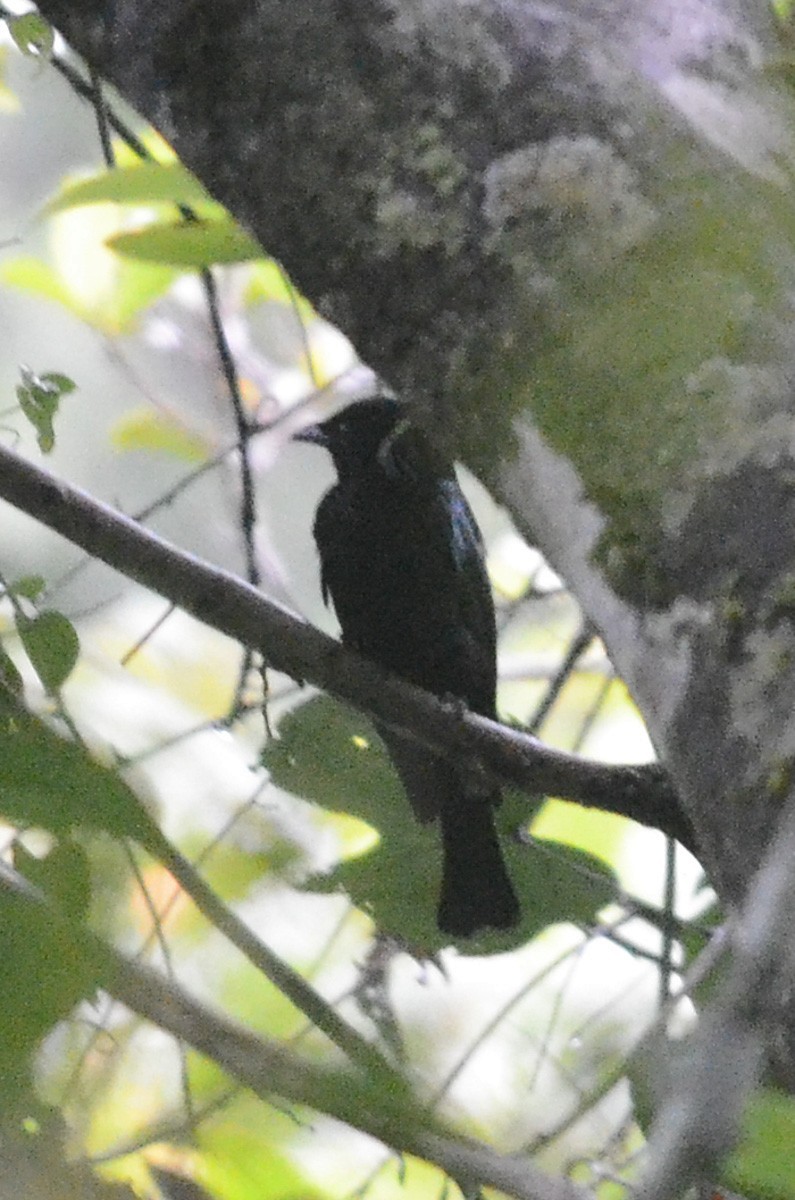Philippine Drongo-cuckoo
A species of Drongo-cuckoos Scientific name : Surniculus velutinus Genus : Drongo-cuckoos
Philippine Drongo-cuckoo, A species of Drongo-cuckoos
Botanical name: Surniculus velutinus
Genus: Drongo-cuckoos
Content
Description General Info
 Photo By Nikolaj Mølgaard Thomsen
Photo By Nikolaj Mølgaard Thomsen Description
The Philippine drongo-cuckoo (Surniculus velutinus) is a bird of the cuckoo family found only in the Philippines. It belongs to the genus Surniculus along with the Asian drongo-cuckoo (S. lugubris). The two were previously classified as a single species but are now often separated based on differences in calls and juvenile plumage. It is 23 centimetres (9.1 in) long. The black bill is slender and curved and the tail is fairly long and slightly forked. The plumage is mostly glossy blue-black apart from a white bar on the underwing and white marks on the thigh feathers and on the underside of the tail. Young birds are duller than the adults but otherwise similar unlike young Asian drongo-cuckoos which are spotted white. The call is a repeated series of 8 or 9 ascending notes. It inhabits the canopy and middle storey of lowland forest. It is usually shy and solitary. There are two subspecies: S. v. velutinus on Mindanao, Samar, Leyte, Bohol and the Sulu Archipelago and S. v. chalybaeus on Luzon, Mindanao and Negros. On Palawan, the species is replaced by Asian drongo-cuckoos of the race minimus. Little is known about its breeding habits. It is likely to be a brood parasite laying its eggs in the nests of other birds but its host species are unknown. 
Size
23 cm
Nest Placement
Cavity
Feeding Habits
Philippine Drongo-cuckoo primarily feeds on insects, foraging within the forest canopy. This diet includes a variety of arthropods. Their foraging method is adapted to their arboreal habitat, seeking food among the treetops.
Habitat
The philippine Drongo-cuckoo is commonly found in primary and secondary forests as well as mixed bamboo woodlands. These habitats are characterized by dense vegetation providing ample cover and foraging opportunities. The philippine Drongo-cuckoo populates areas where these forest conditions are present, typically distributed across broader tropical regions.
Dite type
Insectivorous
General Info
Feeding Habits
Bird food type

 Photo By Nikolaj Mølgaard Thomsen
Photo By Nikolaj Mølgaard Thomsen Scientific Classification
Phylum
Chordates Class
Birds Order
Cuckoos and Relatives Family
Cuckoos Genus
Drongo-cuckoos Species
Philippine Drongo-cuckoo